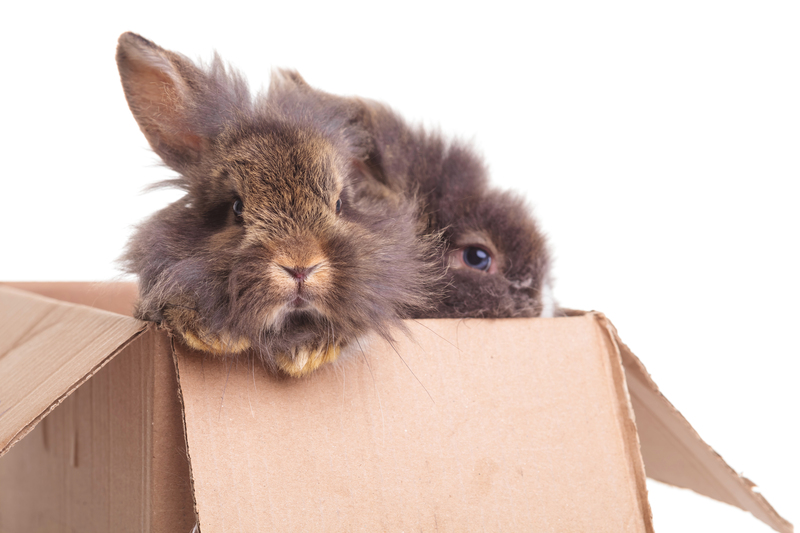How to Avoid Sofa Damage in Storage: The Expert's Checklist
When you're planning a move, downsizing, or simply need some extra space at home, putting your sofa in storage becomes an excellent solution. However, protecting your sofa during storage isn't as simple as just hauling it into a unit and locking the door. Sofas are among the most prized pieces of furniture in any household, often representing significant investment in both money and comfort. Keeping your couch safe from potential damage in storage is critical to ensure it stays in perfect condition for years to come.
In this comprehensive guide, we present the expert's checklist on how to avoid couch damage in storage. We'll cover best practices, tips, and essential steps approved by furniture-care specialists. With these strategies, you'll protect your sofa from dirt, pests, moisture, and unwanted wear, ensuring your cherished piece remains pristine!
Why Proper Sofa Storage Matters
A sofa is not just another piece of furniture; it often becomes the centerpiece of a living area. When neglected or poorly stored, sofas can suffer irreparable harm such as tears, mold, warping, or fading. Improper storage may reduce your couch's lifespan significantly, leading to expensive repairs or even costly replacements.
Understanding the risks and taking preventive action is essential. Following expert sofa storage tips ensures your sofa will emerge from storage as comfortable and beautiful as the day it went in.

Expert's Checklist: How to Avoid Sofa Damage in Storage
1. Choose the Right Storage Unit for Your Sofa
-
Opt for Climate-Controlled Storage:
- Moisture and temperature fluctuations can warp frames, cause mold, and lead to fabric deterioration.
- Climate-controlled units are best for protecting upholstery and wood from humidity and heat.
-
Select an Appropriately Sized Unit:
- Avoid cramming your sofa among other items, which can cause crushing and bent frames.
- Leave sufficient space around your couch for air circulation and easier retrieval.
-
Check for Cleanliness & Security:
- Inspect the unit for pests, leaks, or dirt before moving your couch inside.
- Make sure the storage facility is secure to deter theft or vandalism.
2. Clean and Prepare Your Sofa Before Storage
-
Vacuum Thoroughly:
- Remove dust, crumbs, hair, and debris from all crevices, cushions, and surfaces.
- Pay special attention under cushions and along seams.
-
Deep Clean Fabrics:
- Use a manufacturer-approved cleaning solution for your sofa material.
- Ensure upholstery is completely dry to prevent mildew or mold growth in storage.
-
Polish and Condition Leather:
- If you own a leather sofa, apply conditioner to keep the leather supple and resistant to cracking.
-
Treat and Protect Wood:
- Use furniture polish to protect wooden arms or legs from moisture and dust.
3. Disassemble If Possible
-
Remove Legs, Arms, and Cushions:
- Store detachable parts separately, wrapped in padding for added protection.
-
Label Parts:
- Keep screws, bolts, or hardware in a labeled bag, taped underneath the sofa for easy reassembly.
4. Wrap and Protect Your Sofa
-
Use Breathable Covers:
- Avoid plastic wrap that traps moisture; instead opt for cotton sheets, furniture blankets, or moving pads.
- Breathable materials prevent condensation and help avoid mold and mildew.
-
Avoid Direct Contact With Floors:
- Place your sofa on wooden pallets or risers to protect from any potential floor moisture.
-
Extra Padding for Delicate or Valuable Sofas:
- Use additional egg crate foam or bubble wrap around edges, arms, and legs for antique or high-value couches.
5. Positioning Your Sofa in Storage
-
Never Stand a Sofa on Its Side or Back:
- Store your sofa in its normal position to prevent deformation of cushions and frames.
-
Allow Space for Airflow:
- Leave at least a few inches between the sofa and walls for proper air circulation.
-
Avoid Stacking Items on the Sofa:
- Heavy boxes or objects will compress the cushions and potentially damage the structure.
6. Prevent Pest and Mold Issues
-
Use Pest Deterrents:
- Place natural repellents like cedar wood blocks or lavender sachets nearby.
- Do not store food or other attractants in the unit!
-
Monitor Humidity Levels:
- Use silica gel or moisture absorbers to help minimize dampness within your storage unit.
7. Routine Checks and Maintenance
-
Visit Periodically:
- If possible, check your sofa every few months for signs of pests, moisture, or damage.
- Early detection allows for quick remedies before major issues arise.
Additional Tips to Keep Your Sofa Safe in Storage
-
Insurance Coverage:
- Consider adding your sofa to your homeowner's or renter's insurance policy when it's in storage.
-
Professional Packing Services:
- If you're worried about handling your sofa, many moving and storage companies offer expert couch packing and moving services.
-
Choose the Right Storage Season:
- If you have flexibility, store your sofa during drier, milder months to further reduce environmental risks.
Common Mistakes to Avoid When Storing a Sofa
-
Using Plastic Wrap Directly on Upholstery:
- While plastic might seem waterproof, it traps humidity and leads to mold or mildew.
-
Storing a Dirty Sofa:
- Dirt, oils, and residues can stain permanently or attract pests if left unattended.
-
Piling Items on Top:
- Placing weight on your sofa can permanently compress or deform cushions and frames.
-
Ignoring Maintenance:
- Lack of interim inspections can mean small problems go unnoticed until it's too late.

Frequently Asked Questions about Sofa Storage
Should I wrap my sofa before storage?
Yes, but always use breathable materials like cotton covers or moving blankets. Avoid wrapping your sofa directly in plastic, which can trap moisture and promote mold growth. Using proper covers is key to preventing sofa damage in storage.
Is it safe to store a leather sofa long-term?
Leather sofas require a bit more attention, such as conditioning the leather and ensuring the unit is climate-controlled. Always store your leather sofa out of direct sunlight to prevent cracking or fading. Proper storage avoids damage to your leather couch in the long run.
Can I stack items on my sofa in storage?
No. Stacking heavy or sharp objects can lead to permanent indentations or tears in fabric and foam. Always keep the sofa top clear while in storage.
How can I avoid odors developing in storage?
Start with a thorough cleaning and ensure your sofa is completely dry before storage. Use moisture absorbers or odor-absorbing products like baking soda packets inside the storage unit for extra protection.
How do I protect my sofa from pests?
Opt for a clean, reputable storage facility. Repel pests with natural products like lavender sachets or cedar blocks around your sofa, but avoid chemical sprays directly on the couch.
Conclusion: Storing Your Sofa the Expert Way
Your sofa is more than just a piece of furniture--it's where you unwind, host friends, and gather with family. Whether storing your couch for a short move or long-term, following the expert's checklist on how to avoid sofa damage in storage is vital to keep your investment safe.
By carefully selecting the right storage unit, preparing your sofa for storage, using protective coverings, and maintaining the environment, you can confidently store your couch without fear of damage. Avoid the common mistakes and be proactive in your approach; your sofa will be ready to reclaim center stage the moment it comes out of storage.
Remember: When it comes to protecting your sofa in storage, a little preparation goes a long way. Follow this expert guide to ensure your sofa remains as comfortable, clean, and stylish as the day it was stored!
- Start planning for storage early
- Invest in the right storage solutions
- Keep your sofa at its best--protected, preserved, and pristine
Need more moving or storage tips?
Check out our expert guides and industry tips to ensure all your furniture, not just your sofa, survives storage unscathed!



